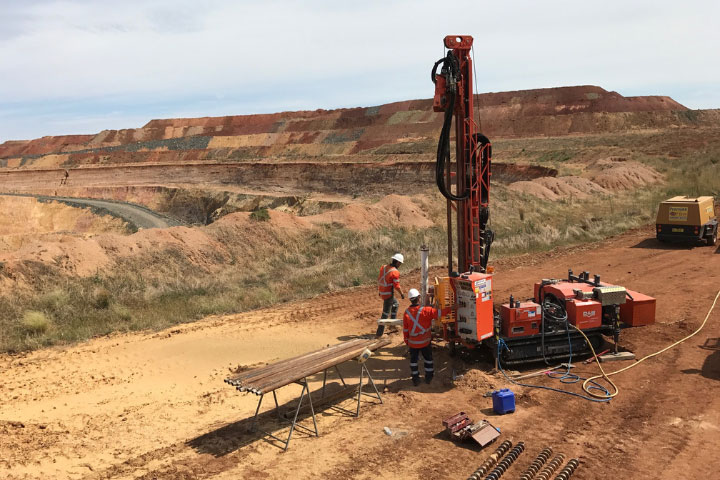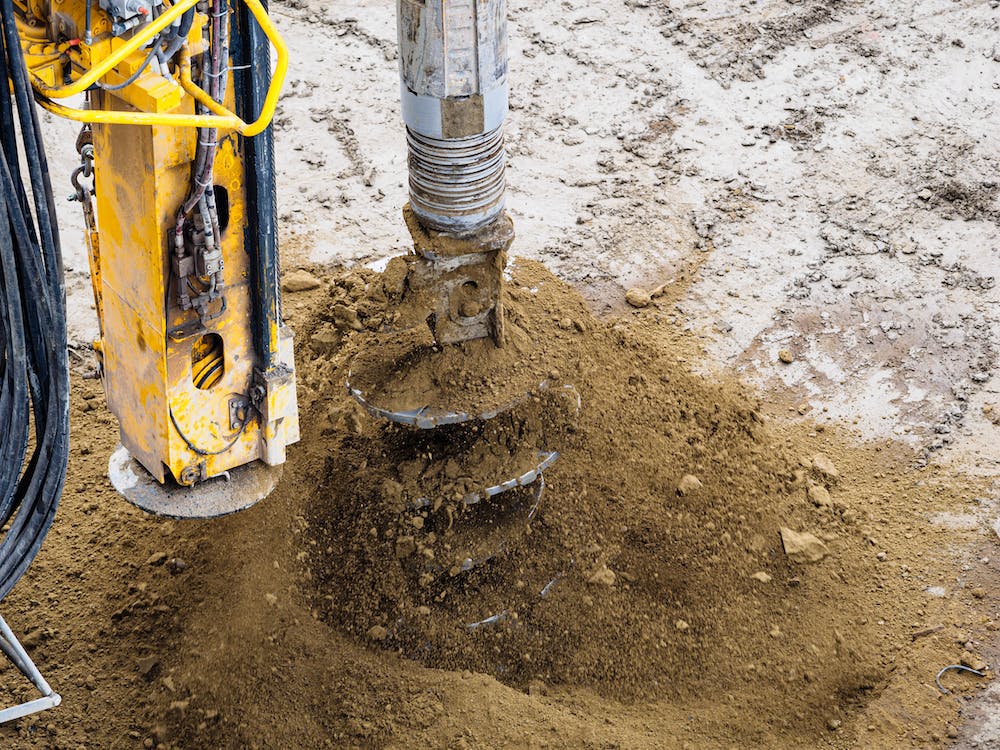Why All About Geotechnical Engineering Matters in Today's Infrastructure Advancement
Wiki Article
The Relevance of Geotechnical Engineering in Dealing With Ecological Obstacles and Enhancing Construction Security
Geotechnical design serves as a cornerstone in the junction of ecological stewardship and construction safety, giving crucial understandings right into the behavior of dirt and rock under different conditions. By carrying out critical site examinations and tailored reduction actions, geotechnical engineers play an important duty in protecting both human lives and environmental stability.
Function of Geotechnical Engineering
Geotechnical engineering plays a vital role in the design and building and construction of facilities by addressing the behavior of dirt and rock products under various conditions. This area of engineering is crucial for understanding the communication between frameworks and the ground, that includes establishing the load-bearing capacity of soil, examining stability, and predicting prospective negotiation or failing.Geotechnical designers are responsible for carrying out site investigations, which entail sampling and screening dirt and rock to gather data on their chemical and physical properties. This information is important for making structures, maintaining walls, and other earth-retaining structures that ensure safety and longevity. Geotechnical engineering educates the option of ideal building methods and products, thereby reducing risks connected with dirt habits.
Furthermore, the assimilation of geotechnical engineering principles into city preparation and ecological administration is vital for dealing with difficulties such as ground contamination and groundwater administration. By understanding geotechnical variables, designers can develop sustainable options that improve the durability of facilities against all-natural risks, while additionally promoting environmental stewardship. Inevitably, the function of geotechnical design is crucial for accomplishing secure, long lasting, and eco aware construction methods.
Soil Disintegration Mitigation
Dirt erosion poses a significant risk to both ecological security and framework integrity, influencing approximately 24 billion lots of abundant dirt lost each year worldwide. This sensation is aggravated by elements such as logging, urbanization, and inadequate agricultural techniques. Geotechnical design plays a critical duty in establishing efficient dirt erosion reduction methods that safeguard both the atmosphere and construction tasks.One strategy entails the application of disintegration control approaches such as plants planting, which maintains soil via origin systems. Additionally, the building and construction of retaining balconies and walls can properly minimize surface runoff and protect vulnerable areas from erosion. Appropriate drain style is additionally important; it reduces water buildup and routes excess drainage away from crucial structures.
Moreover, geotechnical designers employ dirt stabilization strategies, such as the application of geotextiles and naturally degradable mats, to boost soil communication and protect against degradation - geotechnical specialist. Regular tracking and assessment of erosion-prone websites make it possible for prompt interventions, ensuring long-term sustainability. By integrating these strategies, geotechnical engineering not only alleviates the effects of dirt disintegration but also adds to the resilience of facilities against environmental difficulties, ultimately cultivating a safer and extra lasting developed setting
Groundwater Defense Approaches
Groundwater works as an important resource for drinking water, agriculture, and commercial processes, making its defense vital for environmental sustainability and public wellness. Efficient groundwater security methods are important in mitigating contamination threats and making certain the durability of this resource.
Routine surveillance of groundwater high quality is additionally necessary, allowing early discovery of contamination sources and assisting in prompt removal efforts. Utilizing sophisticated modern technologies, such as geophysical studies and remote sensing, help in recognizing prospective dangers to groundwater reserves.
In addition, public education and stakeholder involvement are important, promoting community assistance for groundwater security initiatives. geotechnical engineer description. By integrating governing procedures, technological developments, and community involvement, we can create a thorough structure that safeguards groundwater resources while advertising lasting development and construction techniques
Landslide Risk Management
Landslides pose significant risks to both human safety and facilities, making efficient danger monitoring techniques important. Geotechnical engineering plays a critical function in identifying, assessing, and mitigating landslide dangers. An extensive understanding of incline stability, soil mechanics, and hydrology is essential for developing efficient danger management plans.The very first step in landslide threat administration involves comprehensive website investigations, which include geological mapping and soil screening. These examinations aid engineers review the possibility for landslides by recognizing essential factors such as slope angles, soil make-up, and water web content. Making use of sophisticated innovations such as remote noticing and geophysical surveys can enhance the precision of these evaluations.
Once threats are recognized, suitable reduction steps can be implemented. These might consist of engineering options such as retaining walls, water drainage systems, and incline stablizing techniques. Monitoring systems should be established to find signs of ground activity and modifications in water levels, enabling for positive treatments.

Enhancing Construction Safety
Building and construction websites commonly present a myriad of risks that can jeopardize worker security and project stability. Geotechnical design plays a crucial function in improving building and construction safety and security by offering crucial insights into subsurface problems. Through detailed soil and rock analysis, geotechnical designers can recognize potential threats, such as dirt instability, groundwater issues, and seismic susceptabilities, which may compromise the safety of construction activities.Carrying out geotechnical remedies, such as proper foundation style and the use of maintaining structures, alleviates these dangers substantially. These remedies not only make sure the stability of the frameworks being developed yet also develop a more secure working atmosphere for construction employees.
In addition, promoting a culture of safety via training and adherence to established safety and security methods even more boosts building site safety. By integrating geotechnical know-how right into the planning and implementation stages, building jobs can accomplish greater security standards, ultimately protecting employees and ensuring effective task conclusion.
Conclusion
In final thought, geotechnical design offers as a crucial discipline in taking on ecological obstacles and promoting construction safety and security. With reliable dirt erosion reduction, groundwater protection strategies, and landslide danger administration, geotechnical engineers contribute to the growth of durable facilities. The assimilation of these practices fosters a safer building setting and enhances the sustainability of civil engineering tasks. Eventually, the competence of geotechnical designers is indispensable in protecting both natural deposits and human lives versus possible risks.Geotechnical design serves as a keystone in the junction of environmental stewardship and construction safety, supplying important insights into the actions of soil and rock under various conditions. Geotechnical design notifies the option of appropriate building methods and materials, therefore lessening dangers associated with soil actions.
Geotechnical engineering plays a crucial duty in creating efficient dirt erosion reduction methods that safeguard both the environment and construction tasks.
Moreover, geotechnical engineers use soil stabilization methods, such as the application of geotextiles and biodegradable mats, to enhance soil communication and prevent degradation. Via extensive dirt and rock evaluation, geotechnical engineers can recognize prospective dangers, such as soil instability, groundwater concerns, and seismic vulnerabilities, which may jeopardize the security of construction tasks.
Report this wiki page